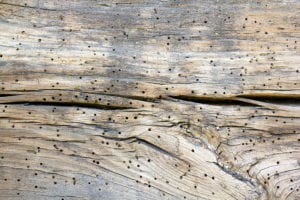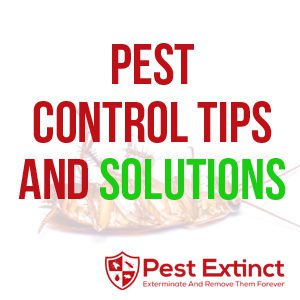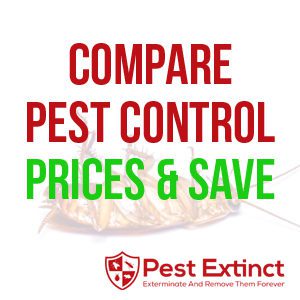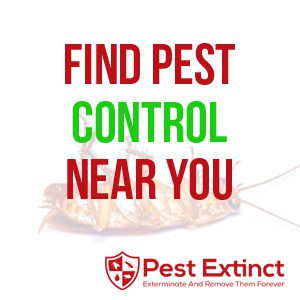
How Long Does it Take to Get Rid of a Pest Infestation?
Pest infestations can be a homeowner’s worst nightmare. From the buzz of a mosquito to the creeping sensation of ants, different pests can wreak havoc on your home and your peace of mind. The duration it takes to eliminate them varies based on the type of pest, the extent of the pest infestation, and the treatment method chosen. This comprehensive guide dives into the timelines associated with getting rid of various pests.
1. Ants
Typical Duration: 1 day – 2 weeks
Ants are social insects, and once they establish a trail, they can become persistent visitors. Bait stations can be an effective remedy, as ants will carry the bait back to their colonies. An ant control service, such as this, can exterminate the entire colony within days to weeks.
2. Cockroaches
Typical Duration: 1 week – 6 months
Cockroaches are hardy pests and getting rid of them is challenging. Gel baits and insect growth regulators can be effective. However, severe infestations might require multiple treatments. Consistency and patience are crucial when battling these critters.
3. Bed Bugs
Typical Duration: 3 days – 6 weeks
Bed bugs require meticulous attention. They can hide in mattresses, furniture, and small cracks. While heat treatments can kill bed bugs within hours, chemical treatments might take longer. Multiple treatments may be necessary to ensure all bugs and their eggs are eradicated.
4. Termites
Typical Duration: 3 days – 2 weeks
Termite infestations can be silent but devastating. Tenting and fumigation can exterminate termite colonies within a few days. Bait systems, on the other hand, can take a few weeks as termites consume the bait and share it with their colony.




5. Fleas
Typical Duration: 2 weeks – 6 months
Fleas are stubborn pests, especially if they’ve infested a pet. Regular flea treatments for pets can resolve minor infestations within a couple of weeks. However, in homes with severe infestations, consistent treatments, including fogging and vacuuming, may be necessary for several months.
6. Mice and Rats
Typical Duration: 1 day – 1 week
Rodents can breed rapidly, leading to severe infestations if not addressed promptly. Traps can catch and eliminate rodents within hours to days, but sealing entry points and ensuring no food sources are available is crucial to preventing a recurrence.
7. Mosquitoes
Typical Duration: 2 days – 2 weeks
Mosquitoes can make outdoor spaces unbearable. While fogging can provide immediate relief, eliminating breeding grounds (standing water) is essential. Biological control methods, like introducing natural predators, can offer long-term solutions.
8. Wasps and Hornets
Typical Duration: 1 day – 2 weeks
Nests close to homes can pose a danger, especially for those allergic to stings. Professionals can often remove or treat nests, rendering them inactive within hours to days. For underground nests, baiting and treatment might take longer.
9. Spiders
Typical Duration: 1 day – 3 weeks
Most spiders are harmless and even beneficial, but infestations can be unsettling. Insecticides can reduce populations immediately, but sealing homes and controlling other pests (spiders’ food sources) can prevent future issues.
10. Silverfish
Typical Duration: 2 weeks – 3 months
These nocturnal, fast-moving pests thrive in damp spaces. While sticky traps can catch adults, addressing humidity and using insecticidal dusts can help eliminate entire populations over time.
Pest infestations are not just a nuisance; they can pose health risks and damage property. While immediate relief can sometimes be achieved, it’s essential to understand that true eradication may require time and consistent effort. Combining DIY methods with professional pest control services can offer the most comprehensive solutions. In all situations, preventing infestations – by maintaining cleanliness, sealing potential entry points, and regularly inspecting one’s home – remains the best approach.




Warning Signs of a Pest Infestation
Even before you spot a pest directly, they might leave behind clues signaling their presence. Recognizing these early warning signs can help you take proactive measures and prevent a full-blown infestation. Here are some common indications that pests may have made their way into your home:
Droppings
Finding fecal droppings or urine trails is a tell-tale sign of a pest presence. Whether it’s tiny black droppings from roaches or larger pellet-like feces from rodents, any pest waste should be an immediate red flag.
Physical Damage to Home
If you notice gnawed wires, holes in walls, or damaged wood, you might have rodents or termites. These pests can cause significant structural damage if not addressed promptly.
Nests or Sheltering Spots
Rodents, in particular, are known to create nests using shredded paper, fabric, or plant matter. Discovering these can indicate a current or impending infestation.
Noises in the Walls or Ceiling
Scratching, rustling, or squeaking sounds, especially during the night, can suggest the presence of mice, rats, or even some insects within the walls or attic.
Unusual Pet Behavior
Your pets have heightened senses. If they are intently staring at a particular spot on the wall, floor, or ceiling, or if they’re more restless than usual, they might be sensing pests.
Evidence of Plant Damage
Gardens are not immune. If your plants are looking unhealthy, showing bite marks, or you notice a trail on their leaves, you might be dealing with pests like aphids, caterpillars, or slugs.
Musty or Unpleasant Odors
Some pests, like roaches, emit a distinct and unpleasant odor. If a part of your home starts to smell unusual, it might be due to pests hiding in the vicinity.




Grease Marks and Tracks
Rodents tend to travel the same routes, leaving dark grease or dirt tracks along walls, baseboards, or floors. Spotting these trails can indicate a rodent problem.
Dead Bugs Indoors
Finding the same species of dead bugs in areas like windowsills or basements repeatedly can suggest an infestation.
Eggs and Larvae
Discovering pest eggs or larvae around your home is a clear indication of an active infestation. These might be in hidden, damp spots, or in pantries where food sources are abundant.
Being vigilant and knowing what to look for can make all the difference when dealing with pests. Early detection not only minimizes damage and discomfort but can also save you money and time in the long run. If you notice any of the above signs, consider reaching out to a pest control professional to assess the situation and recommend the best course of action. Remember, it’s always better to be proactive than reactive when it comes to potential infestations.
Preventing Pest Infestations: Proactive Measures to Take
A pest infestation can disrupt your life, damage your property, and even pose health risks. However, with the right strategies, you can significantly reduce the likelihood of pests calling your home their own. Here are some essential measures to prevent infestations:
Keep Your Home Clean
- Regular Cleaning: Regularly vacuum, dust, and wipe down surfaces. This not only removes potential food sources but also gets rid of pests and their eggs.
- Secure Trash: Ensure garbage bins have tight-fitting lids and are emptied regularly. Dispose of organic waste in sealed compost bins.
- Store Food Properly: Keep food, especially grains and sweets, in sealed containers. Avoid leaving pet food out for extended periods.
Block Entry Points
- Seal Cracks and Gaps: Regularly inspect your home’s exterior for cracks or holes and seal them. This includes gaps in windows, doors, and where utility lines enter the home.
- Install Screens: Use fine mesh screens on windows, doors, and ventilation openings to prevent flying insects and larger pests from entering.
- Weather Stripping: Apply weather stripping to doors and windows. This will not only keep pests out but also improve energy efficiency.
Maintain Your Yard
- Trim Vegetation: Keep trees, shrubs, and other plants trimmed back from your home. Overhanging branches can act as bridges for pests.
- Reduce Stagnant Water: Stagnant or standing water attracts pests like mosquitoes. Ensure gutters are clean, and there’s no accumulated water in your yard.
- Regularly Mow the Lawn: Long grass can be a breeding ground for pests. Regular mowing and garden maintenance can deter them.




Reduce Clutter
- Limit Hiding Spots: Pests like dark and secluded areas. By reducing clutter in and around your home, you can limit their hiding and breeding spots.
- Store Items Off the Ground: In basements and garages, try to store items off the ground and away from walls. This reduces shelter opportunities for pests.
Regular Inspections
- Routine Checks: Periodically inspect less-frequented areas of your home, like attics, basements, and crawl spaces, for signs of pest activity.
- Professional Inspections: Consider having a professional pest inspection annually. They can spot early signs of infestation and offer prevention tips tailored to your home.
Prevention is often more effective than treatment when it comes to pest infestations. By taking proactive steps, you can maintain a pest-free environment and protect your home from potential damage and health hazards associated with unwanted invaders. If you’re ever in doubt, consulting with a pest control professional can provide peace of mind and expert guidance.
3 Prevention Pest Control Services to Consider Investing In
When battling potential infestations, sometimes prevention is the best approach. By proactively investing in specific pest control services, homeowners can keep pests at bay before they become a major issue. Here are three prevention-focused services to consider:
1. Annual Home Inspections
An annual home inspection by a pest control professional can identify vulnerabilities in your property that might be inviting to pests. They look for things like small openings, damage to your home’s foundation, or conditions conducive to infestations. After inspecting, they can provide recommendations on how to rectify these vulnerabilities.
2. Termite Baiting Systems
Termites are silent destroyers and can cause extensive damage before they are even detected. Termite baiting systems are designed to protect properties proactively. These systems attract termites to a bait rather than your home. Once consumed, the bait works to eliminate the entire colony.
3. Perimeter Treatments
Perimeter treatments focus on creating a barrier around your home to prevent pests from entering. Pest control professionals typically apply treatments around the foundation, windows, and doors, ensuring that common entry points are covered.




3 Prevention Techniques Used by Pest Control Services
1. Biological Control
Biological control involves using natural predators or parasites to control pests. This method can be particularly effective in larger areas like gardens or farms. For instance, ladybugs can be introduced to control aphid populations, and certain types of nematodes can be used to target and eliminate pests living in soil.
2. Pesticide-Free Traps
Many pest control services offer trapping solutions that don’t rely on pesticides. These can range from light traps that attract and capture flying insects, to pheromone traps that lure specific pests. They’re especially useful for monitoring pest activity and can be a less toxic option for managing pests indoors.
3. Physical Barriers
In addition to chemical perimeter treatments, physical barriers can be effective in keeping pests out. This might involve installing mesh screens with very fine gaps, sealing cracks and gaps in walls and foundations, or using row covers in gardens to protect plants from certain pests.
Investing in preventive measures can save homeowners a lot of hassle and money in the long run. By understanding the available services and techniques, you can make informed decisions to protect your home from unwanted invaders. Regular collaboration with a trusted pest control professional can ensure your living space remains comfortable and pest-free.
Understanding the Different Ways Pest Infestations May Be Treated
Pest infestations can be distressing for homeowners, leading to health risks and potential damage to properties. Luckily, there are numerous ways these infestations can be treated, depending on the type and severity of the infestation. By understanding the methods used by professional pest control companies, homeowners can make informed decisions on which treatment might be most effective for their specific situation.
Chemical Treatments
- Insecticides and Pesticides: These are chemical substances used to kill insects and pests. Depending on the pest in question, they can be sprayed, fogged, or used as baits. While these chemicals are effective, it’s crucial to ensure that they are applied safely, especially in homes with children and pets.
- Fumigation: For severe infestations, especially for pests like termites, a professional might recommend fumigating the entire property. This involves sealing off the property and filling it with pesticide gases or fumes.
Biological Treatments
- Beneficial Insects: As previously mentioned, biological treatments involve using natural enemies of pests. For instance, introducing certain types of beetles or mites can help control pest populations.
- Microbial Insecticides: These contain bacteria, fungi, or viruses that specifically target pests, leaving other creatures unharmed. An example is the use of Bacillus thuringiensis, a bacterium that’s effective against a variety of pests.




Physical and Mechanical Treatments
- Traps: Different traps can capture or kill pests. Common examples include mouse traps, glue traps, and light traps. They offer a non-toxic approach and are especially useful for monitoring activity levels of pests.
- Heat Treatments: Some pests, like bedbugs, are sensitive to temperature changes. By increasing the temperature in an infested area, professionals can effectively kill off these pests without using chemicals.
- Exclusion: This method involves making physical changes to a property to prevent pests from entering. It might include sealing gaps, repairing holes, or installing screens.
Cultural Treatments
- Habitat Manipulation: This involves altering the environment to make it less conducive for pests. For instance, reducing moisture levels can deter pests like cockroaches and termites.
- Crop Rotation: Mainly used in agriculture, this practice disrupts the life cycle of pests by changing the crops grown in a field each season.
Natural Repellents
- Essential Oils: Some natural substances can repel pests. For example, citronella oil is known to deter mosquitoes, while peppermint oil can keep spiders at bay. Pest control companies may use these natural repellents in certain situations, especially if homeowners prefer a chemical-free approach.
Pest control is a multifaceted field, with professionals employing a range of techniques to combat infestations. Whether you’re dealing with a minor annoyance or a major infestation, understanding the available treatment options can help you make the best decision for your home and family. Always consult with a reputable pest control company to assess the situation and recommend the most effective treatment.
Cost Analysis: Treating a Pest Infestation
Dealing with a pest infestation isn’t just a matter of inconvenience and discomfort; it can also pose a financial concern. Many homeowners wonder about the cost implications of treating a pest infestation, which can vary based on several factors. Here, we’ll delve into a breakdown of the potential costs associated with pest control services, helping you anticipate and budget for these expenses.
Factors Influencing Cost
- Type of Pest: Different pests require different treatments. For instance, termites, which can cause structural damage, might necessitate more expensive treatments than, say, ants or roaches.
- Severity of the Infestation: A minor infestation localized to one area will typically be less expensive to treat than a severe, widespread problem. Early detection can often lead to cost savings.
- Size of the Property: Larger homes or properties might require more resources, both in terms of manpower and materials, leading to higher costs.
- Treatment Method: As discussed previously, there are various treatment methods available, from chemical applications to heat treatments. The chosen method can significantly influence the final bill.
- Frequency of Visits: Some infestations might be resolved in a single visit, while others may require multiple treatments over weeks or months. Some homeowners also opt for regular preventative visits, which can be a cost-effective way to prevent future infestations.




Average Cost Breakdown
- General Pest Control: For general pests like ants, spiders, and roaches, homeowners might expect to pay anywhere from $100 to $500 for initial treatment. Monthly or quarterly maintenance can range from $40 to $130 per visit.
- Termites: Given the potential for structural damage, termite treatments can be more costly. On average, homeowners might pay between $500 and $2,500, depending on the size of the property and the treatment method used.
- Bed Bugs: Heat treatments or chemical treatments for bed bugs can vary widely in cost, ranging from $500 to $1,500 for a single-bedroom apartment to $2,500 to $5,000 for a single-family home.
- Rodents: Exclusion methods combined with trapping for rodents can cost between $200 and $600 for a standard infestation.
- Wildlife: For problems involving wildlife, like raccoons or squirrels, homeowners might expect to pay between $150 and $500, depending on the complexity of the removal and any necessary exclusion work.
Tips for Homeowners
- Get Multiple Quotes: It’s wise to seek estimates from several pest control companies. This not only gives you a clearer idea of market rates but also lets you gauge the professionalism and reputation of different providers.
- Ask About Warranties: Some companies offer guarantees or warranties on their work. This can provide peace of mind, knowing that if the pests return shortly after treatment, the company will address the issue at no additional charge.
- Consider Preventative Plans: Investing in regular maintenance can potentially save money in the long run by preventing more severe infestations and associated costs.
While no one relishes the idea of a pest infestation, understanding the associated costs can help homeowners make informed decisions. By assessing the situation, understanding the factors influencing the price, and being proactive in seeking out professional help, homeowners can effectively address pest problems without undue financial strain.




Top 10 Pest Control Services for Pest Infestations in 2023
In 2023, a range of established and emerging pest control services have stood out due to their commitment to quality, customer service, and innovative treatment methods. Below, we’ll explore ten of the top players in the industry, offering a brief overview of each to help homeowners make an informed decision.
1. PestXpert Pro
Renowned for its broad range of services, PestXpert Pro offers both residential and commercial solutions. Their eco-friendly treatments and emphasis on education have earned them numerous accolades.
2. BugBusters
With its state-of-the-art technology, BugBusters has been a go-to for many dealing with stubborn infestations. They specialize in integrated pest management, blending traditional and modern techniques.
3. GreenGuard Pest Solutions
Putting sustainability at the forefront, GreenGuard uses eco-friendly methods to tackle pests. Their commitment to the environment, coupled with effective solutions, has garnered significant attention.
4. InsectAway
InsectAway offers both preventative and reactive services. Their rapid response teams are particularly noted for swift interventions during acute infestations.
5. TermiTech
For those battling termites, TermiTech has become a trusted name. They employ the latest in termite detection and eradication technology, ensuring comprehensive treatment.




6. RodentRid
Specializing in rodent control, RodentRid offers a humane and efficient approach to rodent infestations, with a focus on both removal and prevention.
7. EcoPest
True to its name, EcoPest uses organic, chemical-free treatments that are safe for both the environment and homeowners. Their holistic approach addresses not just the pests but also the factors that may be contributing to the infestation.
8. PestShield Pro
With decades of experience, PestShield Pro brings a wealth of knowledge to its services. They offer bespoke solutions tailored to individual homeowners’ needs, ensuring precise and effective treatment.
9. InnovaPest
InnovaPest has gained recognition for its innovation in pest control. Their research-driven methods, combined with an emphasis on customer service, make them a standout choice.
10. HomeGuard Pest Defense
Rounding off our list is HomeGuard, which offers a complete suite of pest control solutions. Their emphasis on education ensures homeowners not only get rid of pests but also learn how to prevent future invasions.
Choosing a pest control service isn’t just about addressing an immediate concern; it’s also about finding a partner who can help you maintain a safe and comfortable living environment. The companies listed above, with their proven track records and innovative approaches, are all solid choices for homeowners seeking the best in pest control in 2023. Always remember to conduct your research and consult reviews before making a final decision.

Leave a Reply